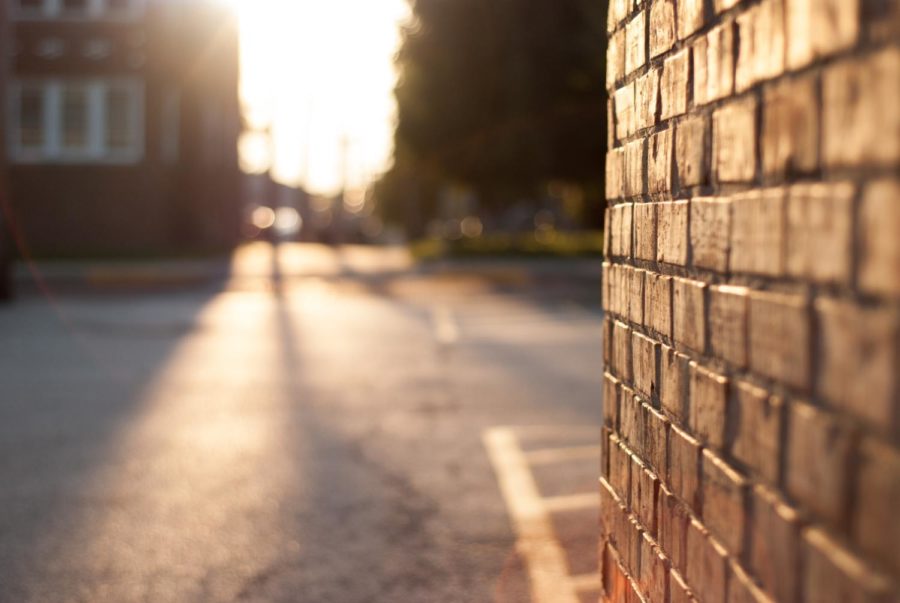Where Main Street (Doesn’t) Exist
Photo by Steve Johnson on Pexels.com
A photo of a street and a brick wall with sunlight filtering over a sidewalk and buildings and trees in a background across a parking lot.
April 20, 2023
Main street—the centerplace of every town—and goes hand in hand with the American Dream. It’s a status symbol, a show of good old Americana in your blood. However, this symbol of success and happiness is becoming more and more inaccessible for most Americans.
For context, main streets are an example of walkable design, which means that it is easier to live in the city without a car, and the buildings are made with people in mind rather than cars. A good example of what walkable design isn’t is the Waugh Chapel Shopping center on route 3. Although there is enough sidewalk space for people to walk, most of the shopping center is taken up by parking space, and it is extremely difficult to get to the center by foot. Unfortunately for us, that shopping center is simply a microcosm of American infrastructure, and the last bastions of walkability are becoming less and less affordable for most Americans. But why is that?
The median price of a single family home in America is around $428,700. In the local area alone, most houses are at least almost $600,000. The national median income is $31,133. Now incomes and housing prices will fluctuate depending on the area. But regardless of the area, it is clear that it is getting harder and harder to buy a home. And that can be directly attributed to the recklessness of suburban sprawl.
By and large, suburban sprawl is a primarily North American phenomenon, where contractors will build spacious, single family neighborhoods, which inevitably leads to massive swaths of America being taken up by the suburbs. That space is a prospective homeowner’s worst enemy, as due to the lack of density in suburban areas, there is a much smaller house-to-land ratio, driving prices up. And due to the sprawling nature of suburbs—and the zoning laws that accompany them—Suburban residents have to drive a car to go anywhere. And that dependence on cars then discourages businesses from gathering together, which is what main streets are at their base. With neighborhoods spread apart and cars becoming a necessity, businesses will follow suit and spread out as well.
America’s tendency to build outwards rather than looking back to what is already there has been one of the biggest contributors to our housing crisis, and is the direct cause of the slow death of walkable design. However, there is a solution, and a relatively straightforward one at that. Various laws favor this style of development, including restrictive zoning laws and parking minimums (which means that there needs to be x amount of parking spaces per house).
Alongside a lot of quality of life changes, development reform would enable denser design to come back into the limelight. The journey to reinvent how we build the future is guaranteed to be hard, but it would be beneficial for everyone to invest in urban development to make our neighborhoods friendlier. If enough people get behind it, main street may be saved after all.
